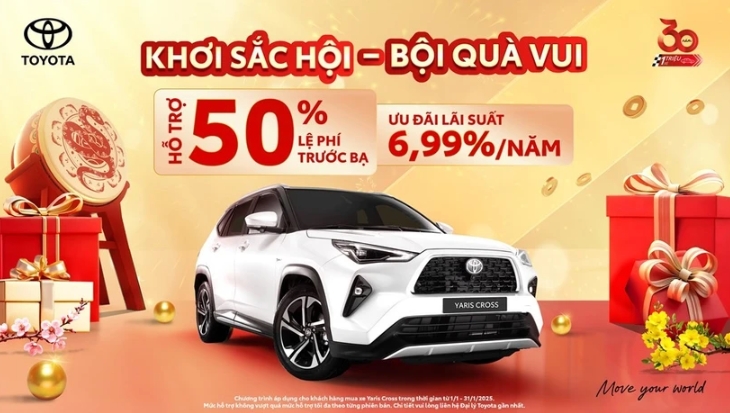Vietnam's automobile industry to face multiple challenges in 2025
The Ministry of Industry and Trade has forecast that Vietnam's automobile market could grow by approximately 12% in 2025, with sales expected to reach 600,000 units.

In 2024, the market recorded sales of 340,142 units, marking a 12.6% year-on-year increase, according to the Vietnam Automobile Manufacturers' Association (VAMA). Notably, sales of domestically assembled vehicles dropped by 5%, while imported vehicle sales soared by 39%, despite a three-month period of 50% registration fee incentives for locally assembled cars.
Among VAMA enterprises, Toyota reported sales of 8,642 vehicles in 2024, with only 2,790 units domestically assembled and 5,852 imported as CBUs. This represents a significant departure from the earlier dominance of locally assembled models.
In 2024, the Vietnamese market saw a growing presence of international brands, particularly those from China, introducing numerous new models. This trend is expected to continue this year, intensifying competition.
Meanwhile, domestic manufacturers like VinFast have contributed to diversifying the market and offering consumers a wider range of choices. The adoption of electric and hybrid vehicles is also gaining momentum, driven by an increasing preference for environmentally friendly options among consumers.
Market challenges
High bank interest rates and the sluggish performance of other economic sectors, such as real estate and stock markets, have negatively impacted automobile purchasing power. In response, many auto companies have reduced profits by offering incentives to stimulate consumer demand.
Experts predict that 2025 will be a transformative year for Vietnam's automobile market. While automakers are expected to face challenges such as intense competition from imported vehicles and increasingly diverse consumer demands, these difficulties also present opportunities for innovation to meet modern consumption trends.
The Vietnamese automobile market experienced substantial growth in 2024, driven by the government’s 50% registration fee reduction policy and aggressive promotional campaigns by dealerships. Including non-VAMA brands like TC Motor’s Hyundai and VinFast, total market sales reached approximately 510,000 vehicles, just below the 2022 record of 520,000.
In addition to VAMA members, other players such as Audi, Jaguar Land Rover, Mercedes-Benz, Nissan, Subaru, Volkswagen, and Volvo also participated in the market, although they did not disclose their sales figures.
VinFast stood out as a dominant player, achieving record-breaking sales of 87,000 vehicles. This exceeded its targets and surpassed the annual sales of many other automakers, securing its position as the best-selling car brand in Vietnam.
The remarkable performance was bolstered by government policies, including a 100% registration fee waiver for electric vehicles and a 50% fee reduction for locally manufactured and assembled cars between September and November 2024. These policies triggered a short-term surge in sales as automakers, including those offering imported models, introduced discounts to retain market share. However, once the registration fee incentives expired, sales in December 2024 dropped to 31,598 units—a significant 29% decline compared to the previous month.
With these dynamics in play, 2025 promises to be a pivotal year for Vietnam’s automobile market, characterised by challenges, opportunities, and significant transformations.



